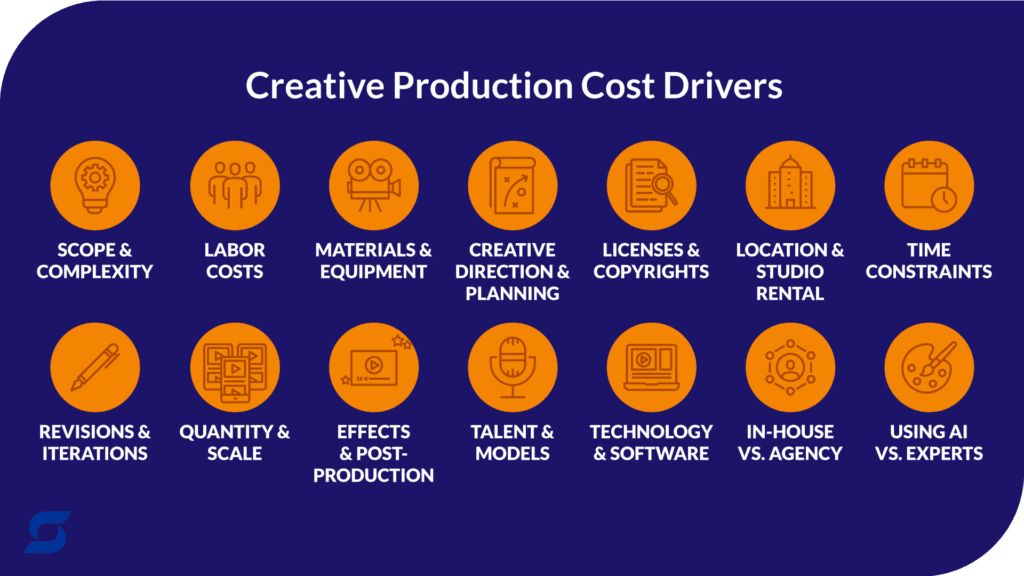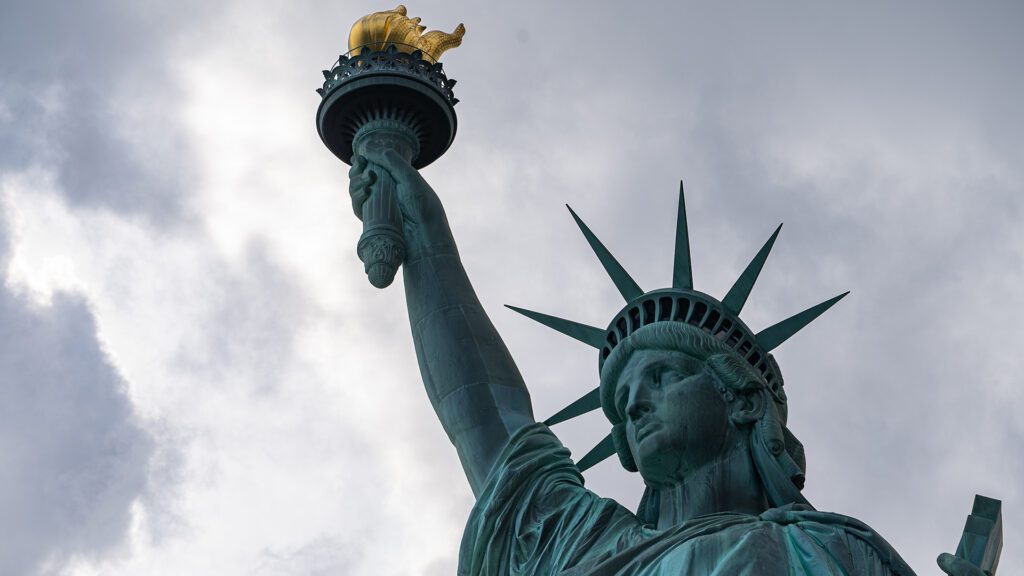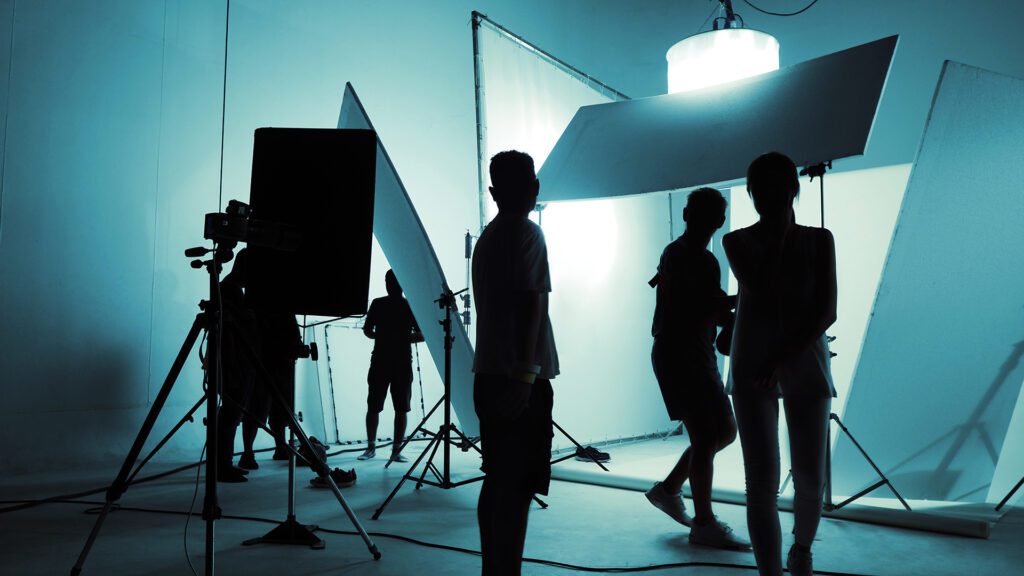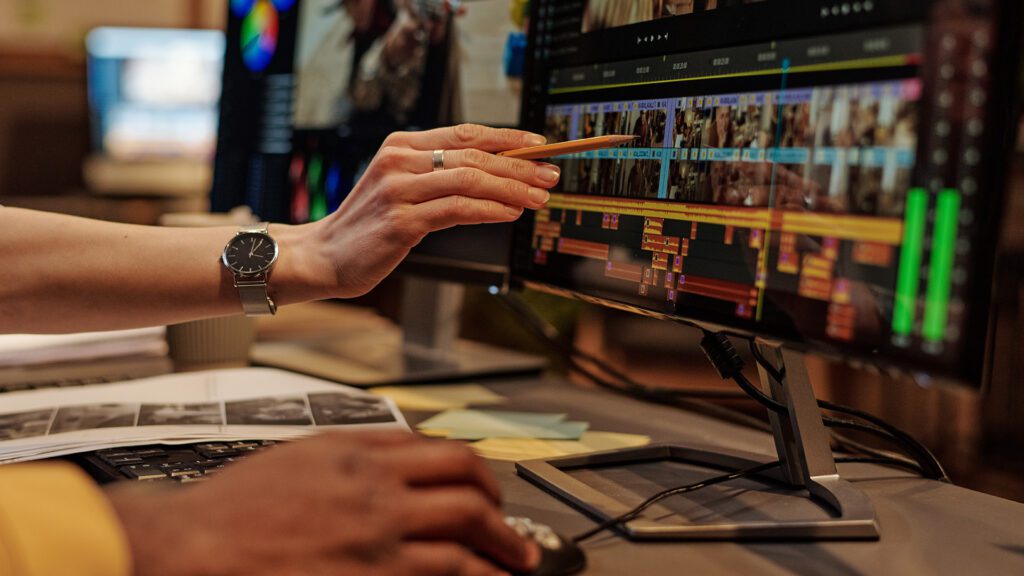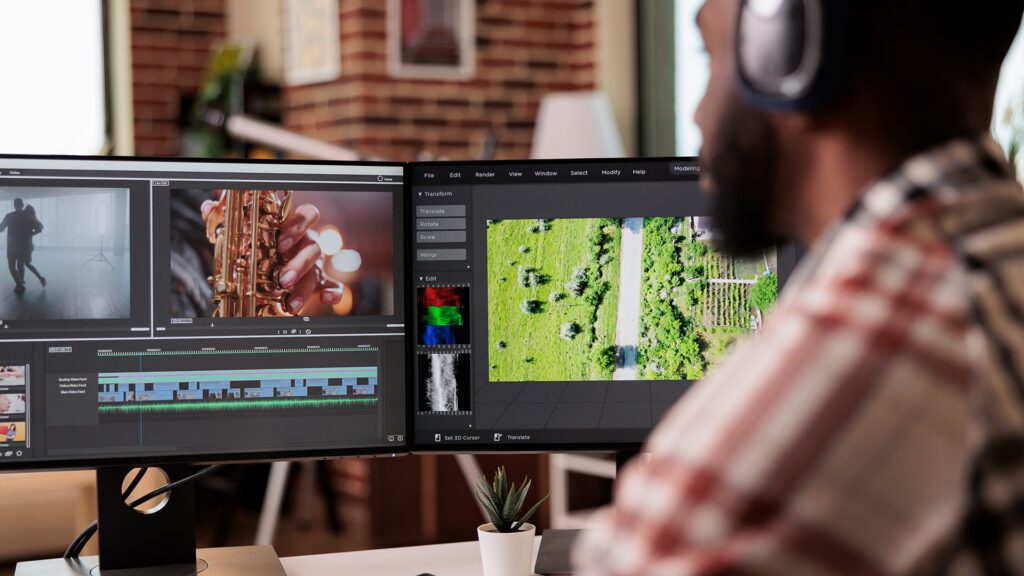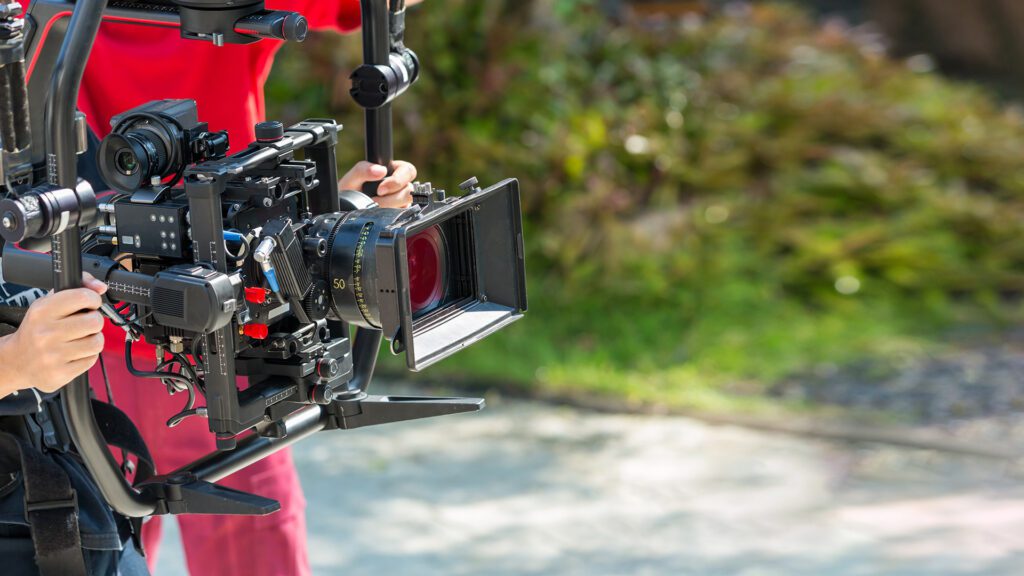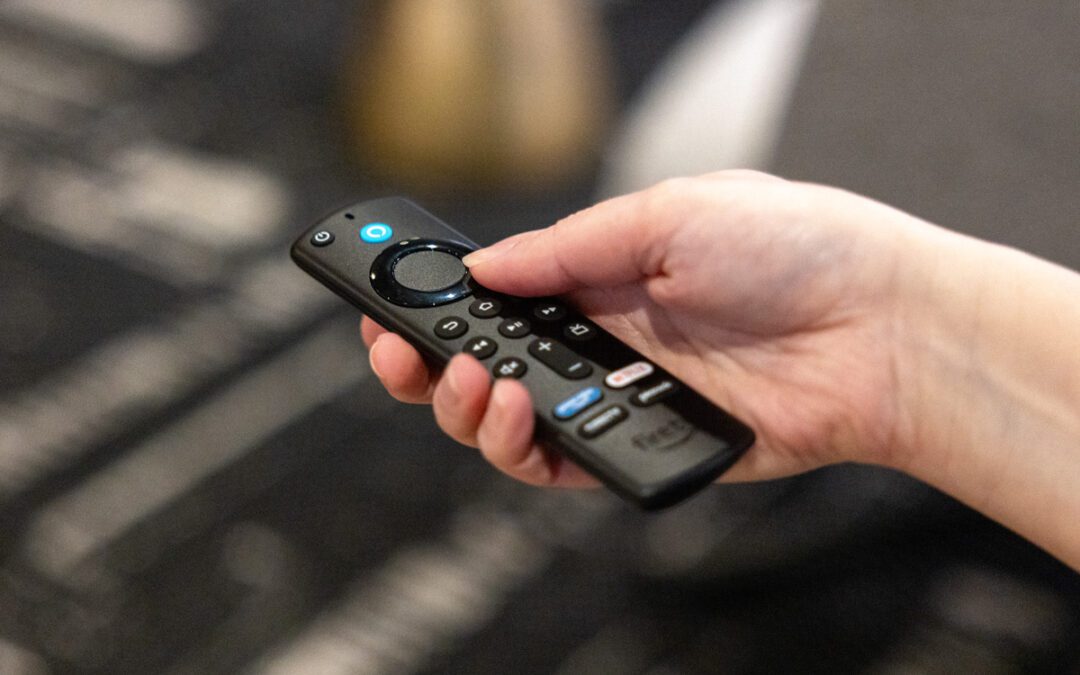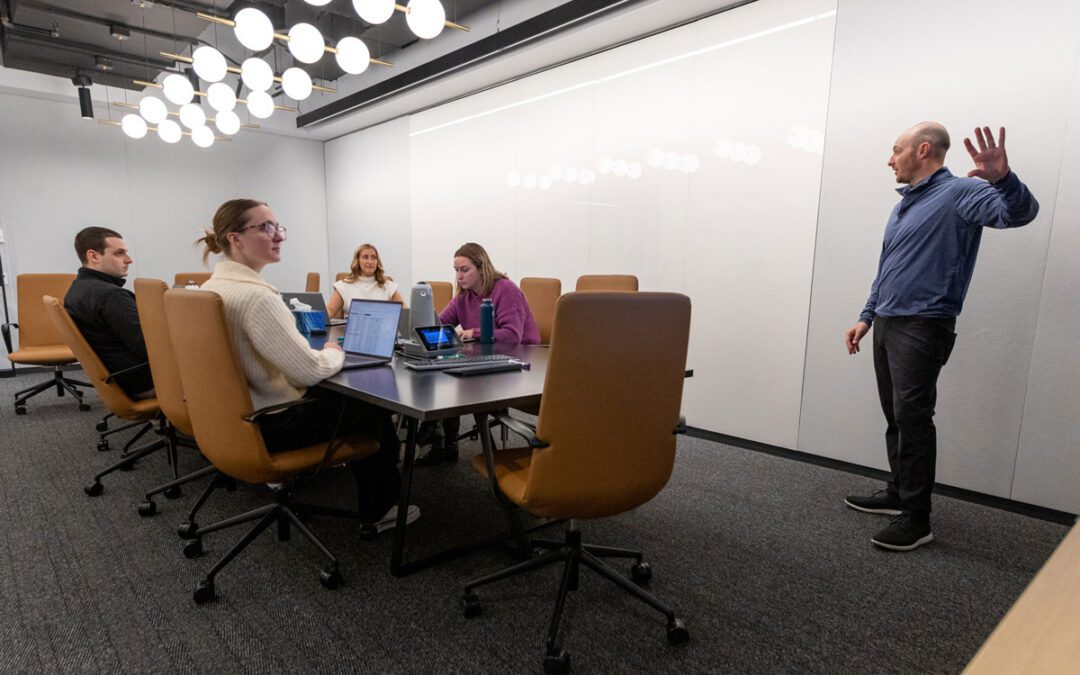In the dynamic world of advertising budgets, understanding creative production cost drivers is key for both executives and creators. Questions like “How much should I spend on my radio ads?” or “How much does it cost to make a TV commercial?” are common.
The answers depend on many factors. Let’s begin to discuss overall marketing strategy and ad budget. From there we’ll go over the cost drivers to consider in creative production.
Production budget recommendations vary across marketing type and industry. It’s simplest to think in ad spend percentages and to only consider the following as guidelines:
- Direct Response Marketing: This type of marketing is focused on generating an immediate response or action from the audience, such as a sale or a sign-up. In digital marketing, the goal may be to solicit clicks on your ads. Since the emphasis is on conversion, the media spend is often higher than the production spend. A typical ratio might be 20% production and 80% media spend. However, this can vary based on the channels used and the creative requirements.
- Performance Marketing: Similar to direct response marketing, performance marketing is focused on measurable outcomes, but it often encompasses a broader range of actions beyond immediate sales (e.g., leads, app installs). The production-to-media spend ratio can be similar to direct response marketing, with a general guideline of 20-30% for production and 70-80% for media spend. Again, this can vary based on the specifics of the campaign and the channels used.
- Brand Marketing: This type of marketing is focused on building brand awareness and equity, rather than immediate conversions. As a result, the production spend might be higher to ensure high-quality, memorable creative content. A typical ratio might be 30-40% production and 60-70% media spend. For premium brands or high-impact campaigns, the production spend might be even higher.
It’s important to note that these ratios are just starting points. They can vary widely based on factors like industry, target audience, campaign objectives, and media channels used. It’s also common for the ratios to shift over time as you optimize campaigns based on performance data.
Now that we have a better understanding of how to allocate your marketing budget, we can dive into the costs that drive your creative production.
Scope and Complexity
The complexity of a project is a big cost driver. Elaborate requirements, such as 3D animations or CGI rendering, often require specialized skillsets and tools, driving up the cost. On the other hand, simple designs or straightforward tasks like basic photo editing are usually more affordable.
Labor Costs
The expertise of the professionals involved can greatly affect costs. Highly-skilled professionals, like graphic designers, video editors, or creative directors garner higher fees and production costs. Using in-house talent or less experienced freelancers can lower labor costs.
Materials and Equipment
The materials and equipment used (think cameras and lights for a TV commercial) also drive costs. Special equipment or high-quality materials can increase prices, while standard equipment and materials are more cost-effective.
For video productions, using specialized equipment oftentimes means needing a trained operator, which can boost labor costs. The operator needs experience to use the gear effectively. This shows how it’s important to consider when certain cost drivers impact others in creative development.
Creative Direction and Planning
Extensive planning and concept development, involving market research and strategy, also play a role. For example, if you’re entering a new market and need a brand-new campaign for a different target audience, it would drive costs up. Quick, straightforward projects may require less planning, making them more budget-friendly. Maybe you need assets created for an already-existing campaign.
No matter how extensive your project is, it’s crucial to create a detailed creative brief at the beginning. This helps to make sure that the marketing, creative, and executive teams are all on the same page. It requires more upfront time, but having a creative brief reduces ambiguity throughout the process. The result is more effective creative, developed quicker with fewer revisions.
Licenses and Copyrights
Copyrighted materials or licensed assets commercially can lead to expensive royalty fees for both visual and auditory content. Using original content or free-to-use resources can reduce expenses. For example:
- The Statue of Liberty is not copyrighted, but the Hollywood Sign is.
- Richard Wagners, “Ride of the Valkyries” (1851) is public domain, but Duke Ellington’s “It Don’t Mean a Thing” (1943) is copyrighted.
Location and Studio Rental
Renting studios or private locations can be costly and sometimes permitting can also be expensive. Conversely, using existing spaces (like your business’s office) or free outdoor settings can save money.
Location scouting adds value by finding ideal settings for your project. Though, it also increases costs and time due to scouting fees and permit requirements.
Balancing the benefits of tailored settings against the expenses of scouting and permits is key to managing location costs. Additionally, building or utilizing custom sets allows for a smooth and controlled production. Building a custom set requires design, materials and labor to create, driving up the cost. Utilizing studio spaces with existing sets can be an effective solution: think a kitchen set for a food photoshoot.
Time Constraints
Rushed projects may require overtime pay or expedited production, which can be more expensive. Projects with flexible timelines can be more cost-effective.
Conversely, projects that experience a delay in timelines can drive costs up. Creative delays could happen because of creative teams awaiting stakeholder feedback or approvals. Delays will also occur when creative teams need to go back to the drawing board due to misalignment on objectives. Remaining clear on project objectives and deadlines at the onset will keep costs related to timelines more predictable.
Revisions and Iterations
Related to timelines, frequent revisions or changes to the creative work can extend production time and increase costs. Clear and concise project requirements can minimize revisions. Thorough and batched reviews also help a project stay on budget.
Quantity and Scale
Producing a large quantity of assets or creating content for multiple platforms increases costs. However, there can be economies of scale, where cost-per-unit is likely to decrease when batching within one project.
Special Effects and Post-Production
Extensive use of visual effects or post-production editing can be time-consuming and costly. Projects with color grading, complex graphics, or sound design often garner higher costs because they require expertise and time. On the other hand, projects with simple post-production like basic editing and standard color correction keep costs lower.
For example, a testimonial video may require less post-production compared to a high-end commercial with CGI elements. Balancing the creative vision with post-production capabilities and budget constraints is crucial for a successful outcome.
Talent and Models
Hiring professional models, actors, or influencers for content can be costly. Using amateur talent or in-house staff can reduce expenses. Factors including day rate, usage location, usage time period, and image use can all impact talent costs.
Having a clear objective for hired talent at the onset of a project will ensure the best rates. This is especially true if the actor will appear in multiple media types like TV, print, digital, etc. Knowing where their image is used is crucial for fair and aggressive rates. Example: A model/actor appearing on a billboard in Lincoln, Nebraska will garner a lower rate than the same image running in a major market like New York City.
Technology and Software
High-end software and technology for design, video editing, or animation can be costly. Using open-source or budget-friendly software options can save money. The use of templating software or artificial intelligence can substantially reduce your costs due to speed and efficiency.
Before investing in any tools, it is crucial to evaluate your needs, budget, available bandwidth, and creative expertise. This will help you figure out which tools are worth it for your business.
In-House vs. Agency:
Creative production costs can vary depending on whether you work with an in-house team or an external agency. In-house teams offer more direct budget control and quick turnaround times but may have limited resources for complex projects. Agencies provide specialized expertise and scalability, which can be cost-effective for larger initiatives, but can come with higher upfront costs.
Choosing between the two depends on factors like project complexity, budget constraints, and the need for strategic alignment or speed. Carefully weighing these considerations will help determine the most cost-effective and suitable option for your creative production needs.
Using AI vs. Creative Professionals
The integration of AI into creative processes can significantly impact costs. AI tools automate routine tasks such as basic editing, data analysis, and even content generation. That automation can reduce labor costs and speed up project timelines. For instance, AI-driven design software can generate multiple layout options in seconds, saving time and resources.
However, while AI can add efficiency and lower expenses, it cannot fully replace the nuanced understanding and emotional intelligence of human creatives. The unique perspective, experience, and creativity of professionals add irreplaceable value to projects. That’s especially true for ad campaigns requiring strategic thinking, complex problem-solving, and emotional engagement. Balancing the use of AI with the expertise of creative professionals will help you maintain quality while managing costs.
Conclusion
Mastering the art of cost management in creative development is a nuanced dance between artistic vision and financial pragmatism. While this list is not exhaustive, by understanding the various cost drivers and making informed decisions, you can craft compelling creative content that not only resonates with your audience but also aligns with your budgetary constraints.
Remember, the true value of creative work lies not just in its aesthetic appeal but in its ability to effectively communicate your brand’s message and achieve your marketing objectives. A good media plan is essential, but it will not produce results without impactful and strategically-aligned creative. As you navigate this complex landscape, strive to strike the perfect balance between cost-efficiency and creative excellence, ensuring that every dollar spent has a positive return on investment and is a step toward realizing your brand’s full potential.
Get in touch to learn more about how Scale Marketing uses insights to drive growth and business results for companies like yours.

